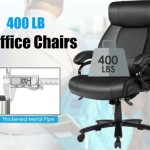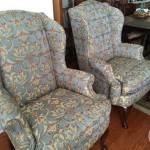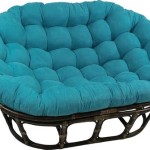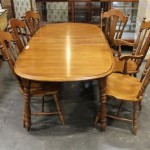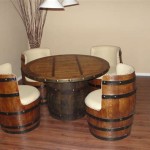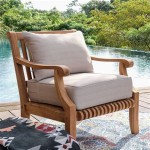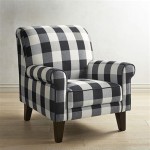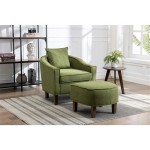Cushions For Kitchen Chairs With Ties: Enhancing Comfort and Style
Kitchen chairs, often utilitarian in design, can significantly benefit from the addition of cushions. Cushions designed specifically for kitchen chairs with ties offer a practical and aesthetic solution to enhance seating comfort and complement kitchen décor. The inclusion of ties is a critical feature, securing the cushion to the chair and preventing slippage, which is particularly important in high-traffic areas like the kitchen.
This article explores the various aspects of kitchen chair cushions with ties, including the materials used, the different styles available, the factors to consider when selecting cushions, and the benefits they provide. The information presented aims to provide a comprehensive understanding of these cushions, allowing consumers to make informed purchasing decisions.
Materials Used in Kitchen Chair Cushions
The materials used in the construction of kitchen chair cushions with ties directly impact their durability, comfort, and ease of maintenance. Different materials offer varying levels of resilience to wear and tear, resistance to stains and spills, and overall comfort. Understanding the properties of common materials is crucial when choosing the right cushions for a kitchen environment.
Foam: Foam is a widely used filling material for kitchen chair cushions due to its affordability and ability to provide cushioning. Different types of foam exist, including polyurethane foam, memory foam, and high-density foam. Polyurethane foam is a common choice due to its balance of cost and comfort. Memory foam conforms to the body's shape, offering enhanced support and pressure relief. High-density foam is more durable and resilient, making it suitable for chairs that experience frequent use. The density of the foam is a key factor; higher density foams generally last longer and provide better support.
Polyester Fiberfill: Polyester fiberfill is another common filling material known for its softness and resilience. It is less expensive than foam but may flatten over time with heavy use. Fiberfill is lightweight and easy to clean, making it a practical choice for kitchen environments where spills are likely to occur. It is also hypoallergenic, which is beneficial for individuals with allergies.
Cotton: Cotton is a natural fiber used for both the cushion filling and the cover fabric. As a filling, it offers a soft and breathable option. However, cotton tends to compress more easily than foam or fiberfill and may require more frequent replacement or fluffing. As a cover fabric, cotton is comfortable, durable, and available in a wide range of colors and patterns. It is also relatively easy to clean, either by spot cleaning or machine washing, depending on the specific fabric treatment.
Synthetic Fabrics (Polyester, Acrylic): Synthetic fabrics like polyester and acrylic are frequently used as cover materials for kitchen chair cushions due to their durability, stain resistance, and ease of maintenance. Polyester is particularly resistant to fading and stretching, making it a good choice for cushions that are exposed to sunlight. Acrylic fabrics offer similar properties and are often used in outdoor cushions, which can be suitable for kitchens with outdoor access. These fabrics are generally easy to clean with soap and water and are less prone to shrinking or wrinkling than natural fibers.
Blended Fabrics: Blended fabrics, such as cotton-polyester blends, combine the benefits of multiple materials. These blends offer a balance of comfort, durability, and ease of care. The specific properties of the blend depend on the ratio of the constituent fibers. For example, a blend with a higher percentage of polyester will be more stain-resistant and durable than a blend with a higher percentage of cotton.
Water-Resistant and Stain-Resistant Fabrics: For kitchen chair cushions, water-resistant and stain-resistant fabrics are highly desirable. These fabrics are treated with special coatings or finishes that repel liquids and prevent stains from penetrating the fabric fibers. These treatments make it easier to clean up spills and maintain the appearance of the cushions over time. While these fabrics may be slightly more expensive, the added protection can significantly extend the lifespan of the cushions.
Styles and Designs of Kitchen Chair Cushions with Ties
Kitchen chair cushions with ties are available in a wide variety of styles and designs to complement different kitchen aesthetics. The style of the cushion can range from simple and minimalist to elaborate and decorative. The choice of style depends on personal preferences and the overall design scheme of the kitchen.
Shape: The shape of the cushion is a fundamental aspect of its design. Common shapes include square, round, and rectangular. Square cushions are a versatile choice that can be used with a variety of chair styles. Round cushions are often used with rounded chairs or stools. Rectangular cushions are suitable for chairs with longer seats. The shape of the cushion should complement the shape of the chair seat for a cohesive look.
Thickness: The thickness of the cushion affects both its comfort and its appearance. Thicker cushions provide more cushioning and support, while thinner cushions offer a more streamlined and minimalist look. The ideal thickness depends on the individual's preference and the existing padding of the chair seat. Thicker cushions are particularly beneficial for chairs with hard or uncomfortable seats.
Color and Pattern: The color and pattern of the cushion are important elements in enhancing the overall décor of the kitchen. Solid-colored cushions offer a clean and simple look that can easily coordinate with existing kitchen colors. Patterned cushions can add visual interest and personality to the space. Common patterns include floral prints, geometric designs, and stripes. When choosing a color or pattern, it is important to consider the existing color palette of the kitchen and select cushions that complement the overall design.
Fabric Texture: The texture of the fabric can also contribute to the overall aesthetic of the kitchen. Smooth fabrics offer a sleek and modern look, while textured fabrics add depth and visual interest. Common fabric textures include linen, velvet, and woven fabrics. The choice of texture depends on personal preference and the desired style of the kitchen.
Tie Placement and Style: The placement and style of the ties are important for both the functionality and the appearance of the cushion. Ties are typically located at the back corners of the cushion and are used to secure the cushion to the chair. The ties can be made of fabric, ribbon, or other materials. The length and thickness of the ties should be sufficient to securely fasten the cushion to the chair without being overly bulky or obtrusive. The color and style of the ties should complement the overall design of the cushion.
Edge Finishes: The edge finish of the cushion can also contribute to its overall appearance. Common edge finishes include piping, ruffles, and plain seams. Piping adds a decorative touch and can help to define the shape of the cushion. Ruffles add a more feminine and decorative element. Plain seams offer a clean and simple look. The choice of edge finish depends on personal preference and the desired style of the kitchen.
Factors to Consider When Selecting Kitchen Chair Cushions with Ties
Choosing the right kitchen chair cushions with ties involves considering several factors to ensure a purchase that provides both comfort and aesthetic appeal. The factors outlined below will assist in making an informed decision based on individual needs and kitchen environment.
Chair Dimensions: Before purchasing cushions, accurately measure the dimensions of the chair seat. This includes the width, depth, and thickness of the seat. The cushion should be slightly larger than the chair seat to provide adequate coverage and prevent gaps. A cushion that is too small will not provide adequate support and may look out of place. A cushion that is too large may be cumbersome and interfere with movement.
Comfort Level: The comfort level of the cushion is a primary consideration. Consider the type of filling material and the thickness of the cushion. If the chair seat is particularly hard or uncomfortable, choose a cushion with a thicker filling and a supportive material like memory foam. If the chair seat is already somewhat comfortable, a thinner cushion with a softer filling may suffice.
Durability and Maintenance: Kitchen environments are prone to spills and stains, so durability and ease of maintenance are important factors to consider. Choose cushions made from durable and stain-resistant fabrics that can withstand frequent use and cleaning. Look for cushions with removable covers that can be machine washed or easily spot cleaned. Consider the filling material as well; some filling materials, like polyester fiberfill, are easier to clean than others.
Style and Aesthetics: The style and aesthetics of the cushion should complement the overall décor of the kitchen. Consider the color palette, patterns, and textures of the existing kitchen elements and choose cushions that coordinate with these elements. The cushion should also complement the style of the chair itself. For example, a modern kitchen may benefit from simple, solid-colored cushions, while a more traditional kitchen may benefit from patterned or textured cushions.
Tie Security: The ties are an essential feature of these cushions, ensuring they stay securely in place. Inspect the ties to ensure they are made of strong, durable material and are securely attached to the cushion. The length of the ties should be sufficient to securely fasten the cushion to the chair without being too long or cumbersome. Consider the placement of the ties and ensure they are positioned in a way that allows for easy and secure fastening.
Budget: Kitchen chair cushions with ties range in price depending on the materials used, the style, and the brand. Set a budget before shopping and look for cushions that offer the best value for the price within that budget. While it may be tempting to choose the cheapest option, investing in higher-quality cushions can often save money in the long run by providing greater durability and comfort.
Reviews and Ratings: Before making a purchase, read reviews and ratings from other customers. This can provide valuable insights into the quality, comfort, and durability of the cushions. Pay attention to reviews that mention specific issues, such as the ties breaking or the filling flattening over time. Consider the overall rating and the number of reviews when making a decision.

Seat Cushions With Ties Quilted Chair Cushion Dining Garden Kitchen Pad Ebay

Foam Soft Tie On Seat Pads Dining Room Outdoor Garden Kitchen Chair Cushions Ebay

Simple Chair Cushion Covers With Ties Pinterest Challenge Momhomeguide Com

Chair Pads Ties

Jingchun 19 22inch Chair Pads With Ties And Non Slip Backing Cushion Dining Table Office Student Home

Seat Cushions 8 Colours With Tie Backs

Blue Vintage Rose Tie On Seat Pad
/product/04/4521162/1.jpg?strip=all)
Generic Chair Cushions For Dining Chairs With Ties Non Slip Memory Foam Kitchen Tufted Seat Dual Layer Pads 16 5 X 3 Best Price Online

Buy Indoor Chair Pad With Ties Dining Pads Non Slip Seat Cushions For Kitchen Chairs 4 6 8 Pcs Black Mydeal

Chair Cushions For Dining Chairs 4 Pack Square Thick Pads With Ties Non Slip Soft And Comfortable Seat Cushion Kitchen Office
